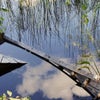Eger is a city in northern Hungary, the county seat of Heves, east of the Mátra Mountains. Eger is best known for its castle, thermal baths, historic buildings (including the northernmost Turkish minaret), and red and white wines.
The name Eger derives from the Hungarian word égerfa (alder tree). In German, the town is known as Erlau, in Latin as Agria, in Serbian and Croatian as Jegar / Јегар or Jegra / Јегра, in Czech as Jager, in Slovak as Jáger, in Polish as Jagier, and in Turkish as Eğri.
Eger has been inhabited since the Stone Age. During the early Middle Ages the area was inhabited by German, Avar, and Slavonic tribes. The area was taken over by the Hungarians in the 10th century. St. Stephen (997–1038), the first Christian king of Hungary, founded an episcopal see in Eger. The first cathedral of Eger was built on Castle Hill, within the present site of Eger Castle. Eger grew up around its former cathedral and has remained an important religious centre in Hungary since its foundation.
The 14th-16th centuries were an age of prosperity for Eger. Winegrowing, for which the town is still famous, began to be important at that time. The bishops of Eger built beautiful buildings in the city during the reign of King Matthias (1458-1490) when Hungary began to be imbued with Renaissance culture.
During the Turkish occupation of Central Hungary, Eger became an important border fortress, successfully defended by Hungarian forces in the 1552 Siege of Eger, in the face of overwhelming odds. The castle's defenders under the command of Captain István Dobó are said to have numbered fewer than 2,000, including women and children, but successfully held off a Turkish army of 80,000 soldiers. Most Hungarians know the version of this story found in the novel "Eclipse of the Crescent Moon" (Hungarian "Egri csillagok", lit. "stars of Eger") by the 19th century Hungarian author Gárdonyi Géza, which is set reading under the Hungarian national curriculum.
However, Eger was attacked in 1596 by a bigger army of Turks, who took over the castle after a short siege. Then followed 91 years of Ottoman rule in which Eger was the seat of a Turkish vilayet (administrative division). Churches were converted into mosques, the castle rebuilt, and other structures erected, including public baths and minarets.
The rule of the Turks in Central Hungary began to collapse after a failed Ottoman attempt to capture Vienna. The Vienna-based Habsburgs, who controlled the rest of Hungary, apart from Transylvania, steadily expelled the Turks out of the country. The castle of Eger was starved into surrender by the Christian army led by Charles of Lorraine in 1687, after the castle of Buda had been retaken in 1686.
]]
Eger soon began to prosper again. The city was reclaimed by its bishops, which caused many local Protestants to leave. Although the city supported the Hungarian leader Prince Francis II Rákóczi in the 1703-1711 war of independence against the Habsburgs, the Hungarians were eventually defeated by the Imperial army. Soon after that, the city was ravaged by plague. However, immigration into Eger was strong, and the population rose from 6000 to 10,000 between 1725 and 1750. Many new buildings were built in Baroque and later in Zopf style, including the cathedral, the Episcopal Palace, the county hall, the Lyceum (now housing the Eszterházy College of Education) and several churches, while others were reclaimed from being mosques.
The 19th century began with disasters: a fire that destroyed half the town in 1800, and a collapse of the south wall of the Castle in 1801, which ruined several houses. Eger became the seat of an archbishopric in 1804, and the church remained in firm control of the city, despite efforts by its citizens to obtain greater freedom. In 1827, much of the city centre was damaged by fire again, and four years later over 200 were killed in an epidemic.
The inhabitants of Eger took an active part in the revolution in 1848. Even though the revolution was suppressed, the age of landowners and serfs had gone forever, and the municipality gained freedom from the rule of the archbishop in 1854. However, the main railway line between Miskolc and Pest failed to pass through the city, which was only later reached by a branch line from Füzesabony.
Economic recovery was slow after World War I, although the 1899 publication of Gárdonyi's "Eclipse of the Crescent Moon" made Eger popular as a tourist attraction and archaeological excavation of the castle began. In World War II, the city suffered under the retreating German army and the arriving Soviet army, but it managed to escape bombardment.
Eger today is a prosperous city and popular tourist destination with a charming Baroque town centre.
Eger is the seat of the Roman Catholic Archdiocese of Eger, an ecclesiastical province of Hungary founded as a bishopric in 1009 and made a Metropolitan archdiocese in 1804, by Pope Pius VII. The current archbishop-elect, Archbishop Csaba Ternyak, was previously Secretary for the Congregation For Clergy. He succeeds Archbishop István Seregely, who retired because of age. The constituent dioceses of the province were Košice (Kassa, Kaschau), Rožňava (Rozsnyó, Rosenau, now part of Slovakia), Szatmár and Szepes (Zipo, Zipsen).
Beside its historic sights and its thermal baths, Eger is famous for its wines. In fact, it produces both red and white wines of high quality Eger Wine Region. The famous and traditional varieties of the region are Egri Leányka, Egerszóláti Olaszrizling, Debrői Hárslevelű (whites), and Egri Bikavér (a red). More recently, Chardonnay and Pinot noir wines have appeared. The region's wines are said to bear a resemblance to those of Burgundy.
(Note: Most of these districts are historical, but they often appear on maps and street signs.)
( Eger has 17 churches, but tourists usually visit only three or four)
Eger is one of only four Hungarian municipalities which have a Mars crater named after them (in 1976). The other three are Paks, Bak and Igal. Eger was one of the filming locations for the Amazing Race 6. Шаблон:Commons





